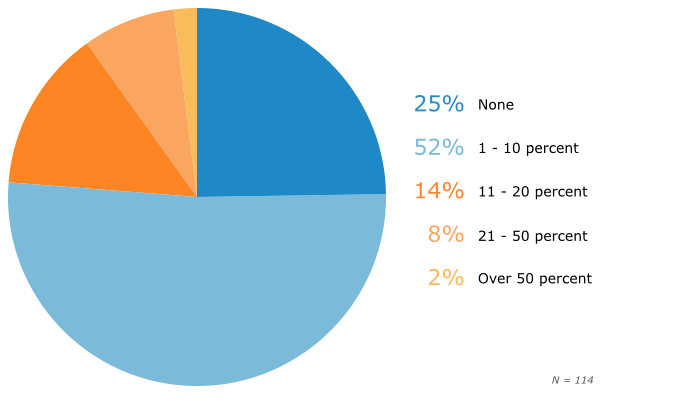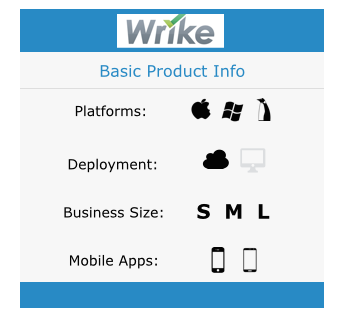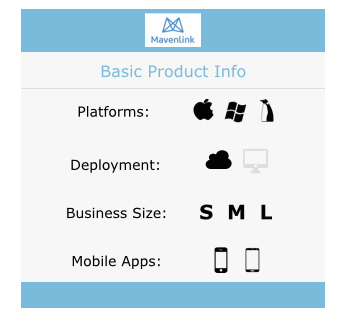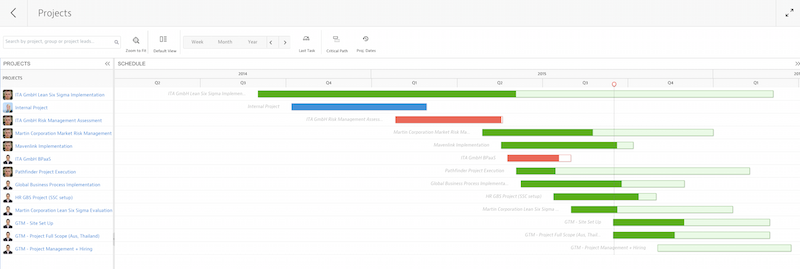Top Project Management Software for Scope Management
Note: This is part one of a three part series. You can view parts two and three here:
Top Project Management Software for Budget Management
Top Project Management Software for Schedule Management
A major part of project success is whether the project remains within predetermined guidelines. At the beginning of every new project, before the actual work on deliverables can begin, managers have to coordinate with stakeholders and clients to:
Define a project’s scope and objectives
Create a timeline
Set an appropriate budget
Once the project is underway, it’s also the manager’s responsibility to track progression of milestones, monitor expenses and maintain the agreed-upon scope, ensuring the project meets its goals. This is referred to as the “triple constraints” or “iron triangle” of project management (PM).
Project managers know this is easier said than done, so we’re here to help. Watch the video below for a 2-minute summary of successful scope management tactics and software, or continue reading the article below for a more in-depth breakdown on these topics.
In Software Advice’s recent e-book about the best software for project risk management, we discover that project success is a tough hill to climb: An average 46 percent of respondents say at least 10 percent of their projects are unsuccessful (meaning they fail to stay within scope, timeline and/or budget).
These are pretty shocking numbers. But luckily, managers aren’t in it alone. There are several PM software tools that can help increase your chances of success.
In this article series, you’ll learn specifics about managers’ success rates for each category—scope management, budget management and schedule management—as well as how specific software functionality can increase the chances of project success.
You’ll learn:
How many projects suffer from “scope creep” and time and cost overruns
What functionality can help combat these issues
The top PM software tools available to assist managers in their efforts
In the e-book referenced above, we surveyed project and team leads about project risk management. Shockingly, we discovered that only 25 percent of respondents manage projects that are successful in meeting predetermined goals and objectives:
52% of respondents say that 1 to 10% of their projects are unsuccessful
14% say the same for 11 to 20% of their projects
8% report that 21 to 50% of their projects fail to meet goals and objectives
Frequency With Which Projects Fail to Meet Objectives

So, why are so many projects unsuccessful? Often, it is the result of scope creep: when items are changed or requirements are added to a project after the work has already begun.
This often causes project teams to fail to complete the agreed-upon deliverables on time or on budget, making team members, clients and stakeholders alike unhappy—and putting managers in the middle, as project success falls by the wayside.
The best way to ensure that projects are on track to meet objectives is to deploy scope management best practices. These include:
⇒ Gathering project requirements and understanding the needs of clients and stakeholders to ensure that you’re delivering what they’re envisioning.
⇒ Using visual tools to outline the project’s critical path and give client and stakeholders a better understanding of what can be delivered within a set timeline and budget.
⇒ Breaking down the work that needs to be done, and scheduling resources to complete each project phase.
⇒ Monitoring and controlling the scope of the project, and keeping clients and stakeholders apprised of progress on deliverables.
Using PM software can help in your efforts to follow these best practices, battle scope creep and keep projects on track. We’ve put together a list of PM tools that have project visualization, work breakdown and tracking capabilities to assist with this.
The following products are some of the most popular and highest-rated, based on survey data and reviews left by real users of these products on Software Advice’s website (see below for full methodology). This list is not meant to be all-inclusive, but rather, is intended to showcase common capabilities of the software that can be helpful for managers when setting and maintaining project scope and objectives.
Wrike’s Scope Management Capabilities

Gantt charts: Wrike’s Gantt-chart maker helps managers visualize project tasks and activities, allowing them to set more accurate expectations around achievable objectives within certain time frames or budgets.
Work breakdown: With Wrike’s subtask functionality, managers can break up large project phases into smaller, more workable items. Managers can monitor progress made on the larger, “parent” task using a progress bar on the dashboard.
Resource workload view: Gives managers better visibility into their teams’ current bandwidth, allowing managers to staff upcoming projects based on availability—and resolve or avoid potential scheduling conflicts.
Project status reports: With Wrike’s reporting functionality, managers can get real-time updates and drill down into information by project, employee or client. Additionally, managers can visualize project status via baseline charts, performance charts and burndown charts.


Workload view in Wrike
Mavenlink’s Scope Management Capabilities

Gantt charts: Mavenlink’s Gantt charts help illustrate the project’s critical path, making it easier for managers to visualize how different tasks and phases within the project interconnect. This ultimately helps them set more accurate client and stakeholder expectations when deciding on a project’s schedule and budget.
Work breakdown: Managers can use Gantt charts to view dependent tasks within a project. When they use the drag-and-drop feature to make changes to milestones and deadlines, all changes carry through dependent-task relationships via the “cascading changes” functionality.
Resource workload view: Managers can run “utilization reports,” which show the availability of personnel for work on projects. Additionally, the “percent complete” feature can be used to calculate how much of a project has been completed. This helps managers accurately communicate project status to clients and stakeholders and to monitor staff’s performance in meeting set milestones.
Project status reports: Status-reporting functionality allows managers to view the total billable and nonbillable hours for a project; how much time was spent on each task, deliverable or milestone; and which team members have logged the most hours. Additionally, managers can view “work in progress,” which shows time that has been accumulated, but not yet billed, for each project.


Gantt chart in Mavenlink
Conclusions -----------
The best way to keep your projects on target to meet initial goals is to stick to the initial project scope. PM tools can help managers:
Visualize the critical path
Set realistic expectations for clients and stakeholders about what deliverables can be achieved within a designated timeline and budget
Monitor progress and team performance to ensure the schedule and budget are being met
While PM software isn’t a magic bullet, it can greatly increase your chances of project success by helping to increase visibility and promote communication and collaboration among project teams. In just 15 minutes, our Software Advice experts can help you pick out the best PM software solution for your business and your project needs.
Methodology
To collect the data used for the chart: “Frequency With Which Projects Fail to Meet Objectives,” we conducted a seven-day online survey of 18 questions, gathering 114 responses from current project managers, engineers and team leads within the United States. We screened our sample to only include respondents from the business services/information technology, construction/engineering and manufacturing industries. Software Advice performed and funded this research independently.
To arrive at the information used for product comparisons, we surveyed software users to find out which systems they’re using, and screened our sample to ensure it only includes actual users of PM software. We then factored in the number of reviews left by real users of these products on Software Advice’s, website and compared only those with a high number of reviews (20 or more reviews and four or more stars). The functionality discussed in these comparisons may not be available with every product package and/or pricing tier.
Results are representative of our survey sample, not necessarily the population as a whole. Sources attributed and products referenced in this article may or may not represent client vendors of Software Advice, but vendor status is never used as a basis for selection. Expert commentary solely represents the views of the individual. Chart values are rounded to the nearest whole number.
If you have comments or would like to obtain access to any of the charts above, please contact eileen@softwareadvice.com.